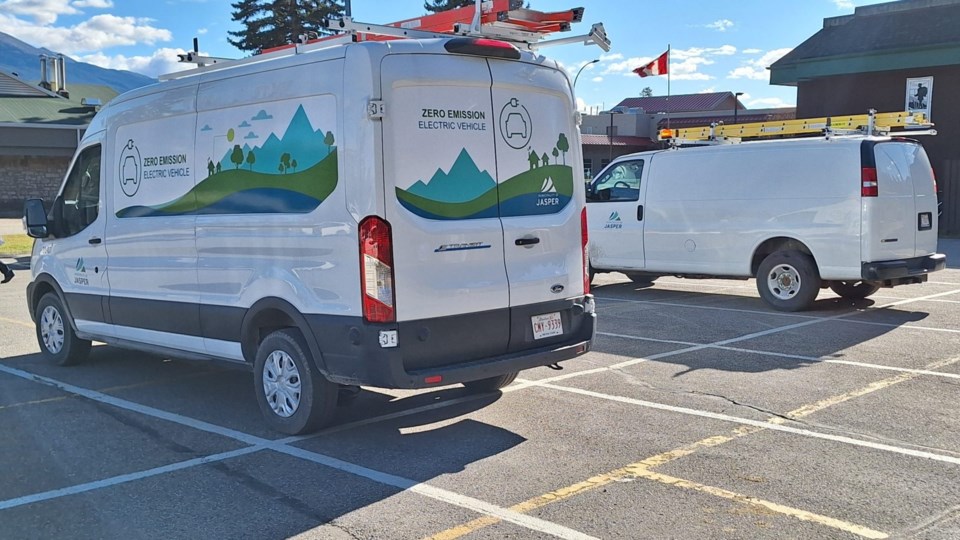Scott Hayes | [email protected]
Local Journalism Initiative Reporter
You won’t be seeing smoky exhaust coming from the tailpipes of the new vehicles belonging to the Municipality of Jasper and Town of Hinton.
You won’t even see the tailpipes because there aren’t any.
Jasper’s new zero-emissions Ford E-Transit electric vehicle (EV) is in use by the maintenance department as a daily drive vehicle going from the compound to different job sites.
Gordon Hutton, Jasper’s municipal buildings and asset manager, said it is the perfect vehicle for multiple short-range trips.
“It doesn’t have the range of gasoline or diesel would, but we don’t need the range here in Jasper,” he said.
“It does have a fairly short drivability distance ... a couple hundred kilometres. Within town, we put 30, maybe 40 kilometres on a busy day.”
Hinton’s new EV is being used in the same capacity: with maintenance crews transporting their tools around.
“It just makes sense,” said Trent McLaughlin, Hinton’s director of development and infrastructure.
“It’s not very many kilometres, but it’s lots of hopping around and the vehicles are on site lots. It’s used every single day, and they’re in and out of the vehicle lots but [it’s] very [few] kilometres.”
Both communities also relied on grants to finance their EVs. Hinton had previously approved $45,000 in its budget for an EV purchase last year but postponed the purchase to obtain more information on its viability as well as to look at available grants.
The town had ATCO conduct the EV Fleet Feasibility Study, and it was approved for a $14,000 grant with the expectation that the vehicle would be available in early 2024. It was ready early and is now in active use.
“The breakeven on the lifespan of the vehicle was almost exactly the same as a gas vehicle when you factor in the grants,” McLaughlin said.
“If it wasn’t for the grants that we secured, it probably wouldn’t have made economic sense.”
The story was much the same in Jasper except for the timeline. With the guidance of a feasibility study conducted by the municipal energy manager, it was recommended that the municipality incorporate EVs into its fleet.
Two different stackable grants became available around that time, leading to pricing out vehicles. The determination was that the cost of one EV would be a solid choice.
“Their decision was pretty easily made for us,” Hutton said.
“With the cost savings offered with no fuel and less maintenance on a traditional engine and transmission, we decided to make this purchase.”
The cost savings continue since no gasoline needs to be purchased. It charges on a regular 120V plugin, so it doesn’t even take up space at one of the municipality’s EV charging station points.
“It’s parked for two-thirds of the day,” Hutton said.
“That gives it ample time to charge even at a very low charge rate. For our fleet, it fits perfectly. In those 16 hours when it sits, it can load the trickle charge enough for the usage of the vehicle for the full day without any issues.”
Hinton and Jasper intend to give the vehicles a year before assessing the potential for adding more EVs to their respective fleets. The availability of future grants would factor into any decisions.
Regardless of what the future holds, the EVs are presently working well and being appreciated by their operators.
“It’s a really good asset for us to have,” Hutton said. “Our operators really enjoy driving it.”




